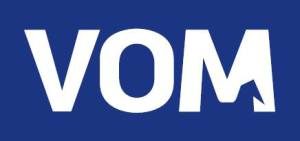Wilco and I had a fun day yesterday, with a lot of obedience training. Since Squid is in heat, I decided to focus on Wilco in every session with our training group. He is really starting to mature. He was able to focus for the entire day, and he’s got more power and speed than before.
We started experimenting with adding distractions when he is sitting by my side and looking up. I’ve been feeding him in position before, but I’ve never interrupted him for looking away, only for moving. I don’t think he’s been mature enough for this before, but now I really felt that I got exactly the result I wanted. The important thing here is not how he performs the behavior, but rather how he is handling being interrupted and having to try again. I want my dog to be engaged in the interruption, and very eager to try again. It should matter to them when they miss out on a reward, but I don’t want to see any displacement behaviors or avoidance. I want the dog to bounce back immediately and work hard to get it right the next time.
Wilco gets quite intense when I interrupt him, but he is doing a great job in going back to calm and focus quickly. With a dog that struggles more with this, I’d probably be moving all the time, and work on focus in motion (walking backwards or with the dog at heel). Remember that this is a process, and with some dogs, you really have to reward them just for trying again. It could be rewarding the over-aroused dog right away for sitting down after the interruption, shaping the response that you want. Or it could be rewarding the more cautious dog for engaging in the no-reward routine, without asking for anything more than that they don’t give up. When Squid was young, I taught her to steal the toy away from me when I did my “haha”-routine. I worked only on the routine, until I got the right emotional response to it.
Working on the best possible emotional response to different interruptive routines is important! We put a lot of work into creating a great emotional response to our different kinds of rewards, but this is just as important if you want to be able to mark incorrect performances (for example in a behavior chain or when working on duration) and by that increase the likelihood that the dog will try again with great attitude. I mostly use this kind of cheerful interruption (term stolen from Denise Fenzi) in well planned sessions, where the choice is an easy yes/no, and if I use distractions I like them to be planned. I think that the rituals would lose a lot of power if I used them all the time to get the dog to try harder. Most of the time in training, just withholding the reward and waiting for them to try again is the best way to handle wrong responses.
Here is a video of Wilco’s training today (second session on this):



Leave a comment